Shimano 105 R7000: the Workingman’s Groupset
If you’re new to cycling, you don’t know how good you’ve got it – at least with respect to the shifting components we now have to choose from. 2018 and 2019 have seen huge developments. Eleven is now the standard minimum number of rear cogs for mid-range equipment. In 2018, Campagnolo introduced 12-speed rear shifting. Shimano brought out the Ultegra RX rear derailleur, with integrated clutch and compatibility with two front chainrings. FSA finally hit the streets with their K-Force WE groupset. About a week ago, SRAM shocked us with a huge revamp, updating their wireless Red components to a whole new 12-speed drivetrain, including radical new chainring and cassette sizes. In short, today’s shifting components are lighter, crisper, and feature more gearing options than ever before.
With that said, I sometimes struggle to get excited about all of these top innovations. Though my personal budget isn’t representative of all cyclists, it’s hard to ignore the fact that these halo products are well beyond my reach (and as we just wrote, I’m not alone – and the manufacturers don’t always do a great job of communicating the technology trickle-down). Maybe it’s just my bias towards inclusiveness, but I get more satisfaction from talking about products that I know can reach a wider audience and will likely be used by new participants.
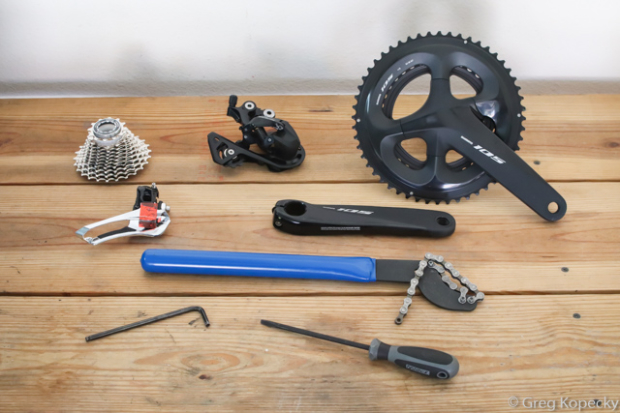
Given the above, I’m over the moon about the latest 105 groupset from Shimano, dubbed the R7000 series. With meaningful improvements all around, including weight reduction, improved tire clearance, more crank length options, and better gearing choices, it’s the ideal groupset for the workingman or workingwoman triathlete. It could be seen as a beyond-halo product compared to department store spec, but I see it as a legitimate threat to Shimano’s own Ultegra and Dura Ace – offering near-equal performance at a huge discount (roughly 50% less than Dura Ace).
Shimano 105 R7000 11-speed groupset review

This isn’t a performance review per se, but rather a technical overview explaining why new 105 is one of the best value products in triathlon today – and why it should be one of the top choices (if not THE top choice) for someone who can’t afford electronic shifting. We analyzed the previous 5800 series 105 when it debuted, so consider this the updated chapter. We also wrote about the relevance of mechanical shifting in today’s market, so take a look at that if it sounds interesting.
Why do I give special attention to 105 with regards to triathlon? For tri, we are mostly concerned with the meat of the groupset – the derailleurs, crankset, cassette, and chain. Many tri bikes come with their own aero brakes, taking 105 brakes out of the equation (though they are excellent). Also, tri bikes use bar end shifters rather than road drop bar levers – eliminating concerns about lever reach and ergonomics (often a big factor when choosing a road bike groupset). When we remove those factors and concentrate on the core, the perceptible performance differences between groupsets become even smaller, begging the question: Why pay more?
105 R7000 Crank

At the heart of any groupset, the cranks are what start the process of turning your power into forward motion. Shimano is known as the king of aluminum cranks, staying with the material long after many competitors have moved to carbon. While older iterations of 105 cranks used “less burly” chainrings, the 105s are now fully up-to-speed with Shimano’s 4-bolt design. The chainrings are the only substantive downgrade from Ultegra and Dura Ace, which both have hollow forged rings, while 105 uses a thick ring that’s been machined out on the backside. The new ring shifts very well; it just doesn’t quite give the instant shift of Dura Ace. As for chainring sizes, Shimano 105 hits the current popular choices for triathlon: 53/39, 52/36, and 50/34.
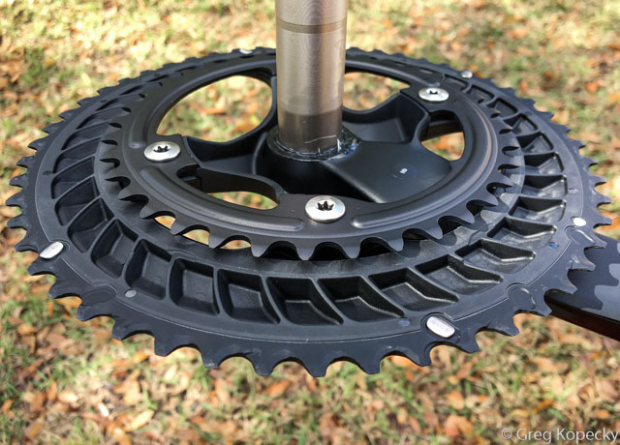
The big news for the latest 105 is that Shimano now advertises a 160mm length for 105 series cranks (the previous 5800 series 105 only went down to 165mm). While not all triathletes use short cranks, it’s a common choice (for good reason), and we like to see short options. It remains to be seen how easy these short cranks will be to find in the aftermarket, but I’m hopeful. If they sell well, we might just see a 160mm option for Ultegra and Dura Ace in the future.
105 R7000 Front Derailleur
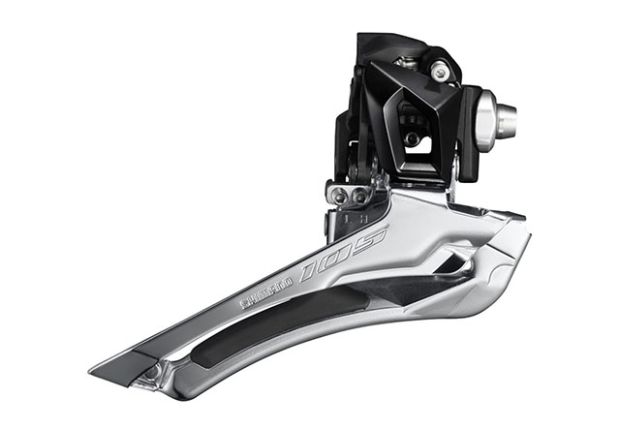
While Shimano has long been known for excellent front shift quality, the previous generation front derailleurs (below) had problems with tire clearance. I discovered it in this 2014 article, and I’m not alone. While it shifted well, the older design (below) relied on a long swingarm that pivoted close to the rear tire, causing rubbing and interference with wide gravel tires.
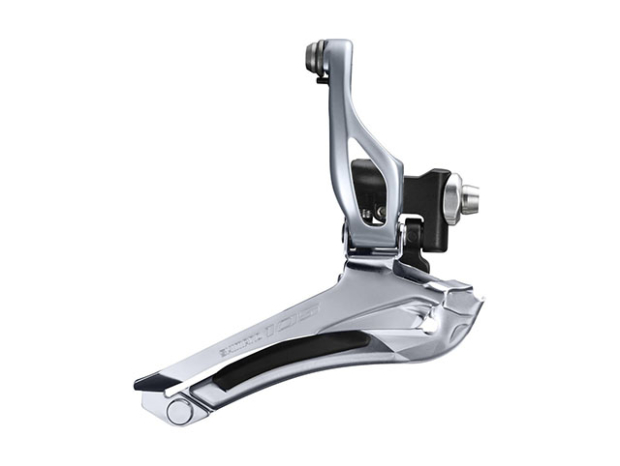
This isn’t typically a problem for triathlon tire sizes, but those tires are growing every day. My triathlon go-to for training is 28mm rubber, which cuts it close on the previous derailleur. The new design cures this while retaining that great shift quality.
105 R7000 Rear Derailleur and Cassette
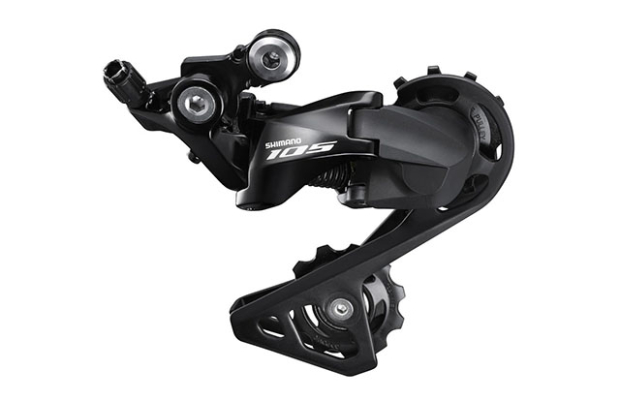
The new rear derailleur has been updated to Shimano’s Shadow design, which was originally made for mountain bikes. It tucks the rear derailleur inboard about 12mm to give better protection in the event of a crash, and also adds compatibility for direct-mount derailleur hangers.
There are two cage length options, providing an expanded gear range compared to previous generations. The short cage works best with 25 to 30 tooth large cogs, while the long cage is best for 28 to 34 tooth large cogs. When in doubt, err long.
The only unfortunate aspect of the new rear derailleur is that it doesn’t have an option for a clutch to limit chain slap (like the Ultegra RX), but perhaps this is in the pipeline. I like a quiet bike, so I like clutch-equipped derailleurs. Still, at this price, it’s not a deal-breaker.
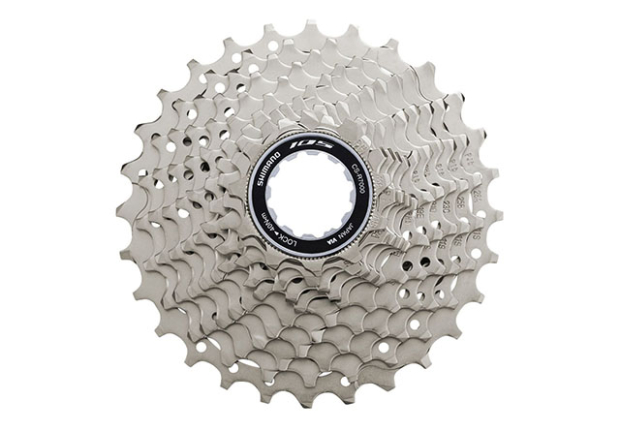
Cassette sizes fill out a nice range, with only one oddity: 12-25. The beauty of having a lot of rear cogs is that you can have a wide overall range with reasonable jumps from cog to cog. When we went to 11-speed, almost everyone wanted an 11-tooth small cog (and all other new R7000 cassettes begin with an 11-tooth cog). In fact, my memory may be failing me, but I seem to remember Shimano offering an 11-25 cassette in 10-speed 105 before they offered it at Ultegra level (circa-2006). I don’t know why they no longer offer it, especially with eleven rear cogs total. If you want an 11-25, you’ll have to pony up for Ultegra.
105 R7000 Brakes
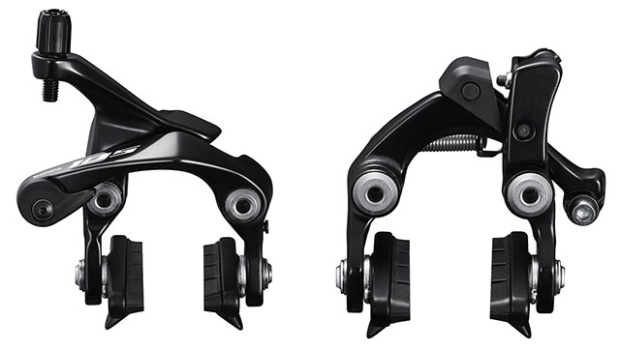
We’ll only touch on the brakes, since there’s not much to say beyond: Shimano makes great brakes. The pivots and bushings are burly, smooth, and last a long time, lending to low braking noise compared to many cheap OEM calipers.
105 brakes are available in all popular variants – standard, direct-mount, and even a special under-BB option. If your tri bike came with less-than-desirable brakes, consider an upgrade to the compatible variant of 105 calipers.

In the disc department, there is now an official 105 series hydraulic caliper, but alas – no mechanical/hydraulic 105 TT brake lever yet (for now, this is reserved for Dura Ace Di2). The 105 hydraulic brakes are currently intended to be used with the road drop bar brake/shift levers. Of course, if you prefer mechanical disc brakes, you can use options such as the TRP Spyre, Avid BB7 Road, and the Shimano CX77 on your 105-equipped disc brake tri bike.
What about 12-speed? Or 1x? Or Di2?
While Shimano hasn’t officially announced 12-speed road components yet, everyone knows it’s just a matter of time. They’ll start with Dura Ace for the first year or two, followed by Ultegra, and then 105. I mention this because I think it’ll be at least 3 years before there is 12-speed at 105 level.
As for single chainring (1x) systems, Shimano is not yet officially on board for road cycling. You can make your own system using components like Wolf Tooth 1x chainrings, but 105 doesn’t have a clutch-equipped derailleur yet (which would help with chain retention).
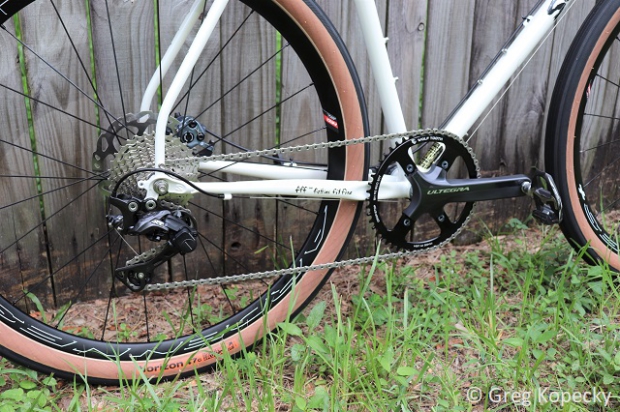
By the time you do everything necessary to make this system happen, you’ve significantly increased the price to a point where you’re probably better off buying a ready made 1x system from SRAM. As such, when I’m recommending build specs for friends, I start with the number of chainrings and cogs. If they’re on a budget and want two rings, I point them to 105. If they prefer a single chainring, I point them to SRAM Rival 1.
Finally, with regard to electronic shifting, it is only a matter of time before we see 105 level Di2. Shimano was first to offer (widespread) electronic shifting, and they may be the only company with a large enough scale to pull off a mid-level electronic groupset. I wouldn’t let it delay your next bike purchase, but I’ll be shocked if it’s not available in 3-5 years.
Is the new Shimano 105 for me?
If that was too much to read, here’s the take-home: The new 105 R7000 is the best value, best-shifting double chainring system to ever come out of the factory doors of the Japanese giant. It’s better than the Dura Ace from a decade ago. It’s going on my personal bike that I’m assembling now. If you can’t afford Ultegra and Dura Ace, don’t waste a second worrying, because you’re not losing anything meaningful, and 105 continues to get lighter (in fact, my new 105 pedals are quite a bit lighter than my previous-gen Ultegras). It’s the kind of stuff that you can install, ride, and never worry about. For first-timers buying true entry-level equipment (such as Shimano Claris or Sora), 105 is a real upgrade that will last longer, shift more accurately, and lower your risk for dropping a chain from the front chainrings during a shift. In other words, it is a worthwhile investment that will reduce headaches in the long run, and won't leave you with buyer's remorse.


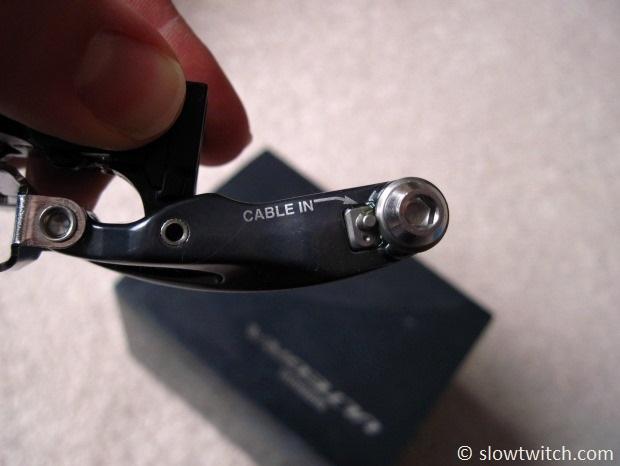
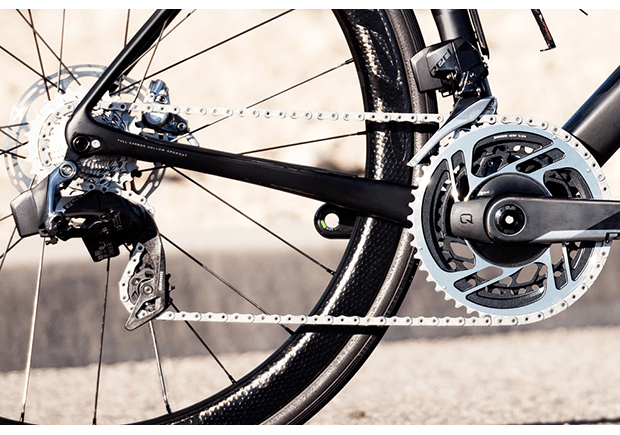
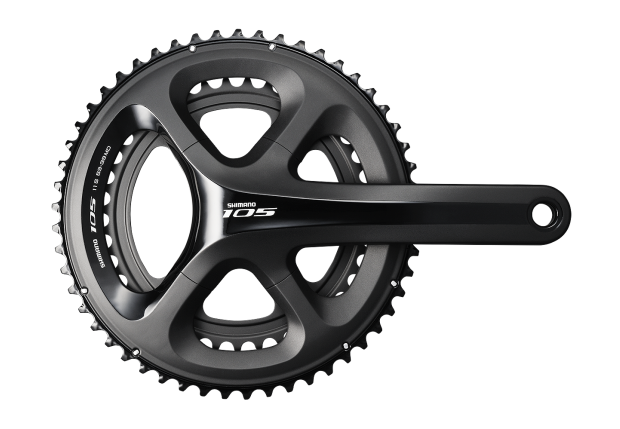
Start the discussion at slowtwitch.northend.network